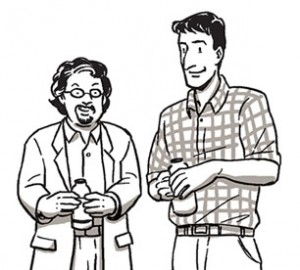Entrepreneurs: Seth Goldman, Barry Nalebuff and Honest Tea
Thursday, March 21st, 2013Normal
0
false
false
false
MicrosoftInternetExplorer4
In 2008 Coke paid $43 million for a 40% stake in Honest Tea and acquired the other 60% in 2011 for an undisclosed amount. The founders are still running the company and (so far) it’s stayed true to its mission.
But that’s not what today is about.
If you aren’t a reader, and even if you are, you’re probably tired of plowing though business books.
Even the good ones are often over-written; publishers want a certain number of pages to warrant the price, so there is often a lot of same thought/different words repetition, while customers’ assume there’s a direct correlation between length/weight and price.
It’s even harder to find business books that provide solid advice for startups that are focused on sustainable, environmentally friendly and socially responsible along with financial success.
Seth Goldman and Barry Nalebuff, founders of Honest Tea, are hoping to fill that gap with a 302 page comic book due out in September.
We’d like to think this isn’t your typical How I Built My Business book. For starters, it looks like a comic book. We designed the book this way because we wanted the story to come alive. You get to share in our journey, meet some colorful characters, and not take us too seriously.
That’s right, comic book style; here’s a preview of the first chapter.
Different company, different business advice, different marketing.
The pair, with a budget they did not disclose, are focusing on online and social media efforts, and have created a Web site, missioninabottle.net, where, for $25, a customer can buy a book, a signed bookplate and a T-shirt.
I haven’t read the book, but the first chapter (all of four pages) makes at least three important points painlessly in very few words. (My kind of writing!)
And skipping a few trips to Starbucks will pay for the signed book and T-shirt.
Such a deal!
Flickr image credit: Mission in a Bottle
/* Style Definitions */
table.MsoNormalTable
{mso-style-name:”Table Normal”;
mso-tstyle-rowband-size:0;
mso-tstyle-colband-size:0;
mso-style-noshow:yes;
mso-style-parent:””;
mso-padding-alt:0in 5.4pt 0in 5.4pt;
mso-para-margin:0in;
mso-para-margin-bottom:.0001pt;
mso-pagination:widow-orphan;
font-size:10.0pt;
font-family:”Times New Roman”;
mso-ansi-language:#0400;
mso-fareast-language:#0400;
mso-bidi-language:#0400;}








